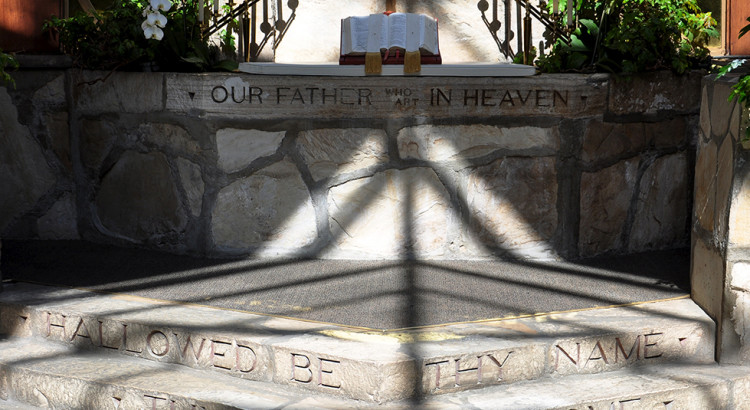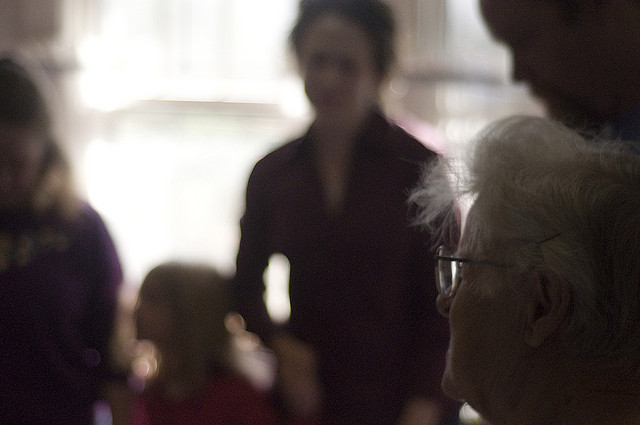1 Samuel 16:1-13; Psalm 23; Ephesians 5:8-14; John 9:1-41
I wasn’t at the morning liturgies last week, but I have it on the sound authority that is the parish website that Mother Kate had a challenge for us: “You NEED to be praying and reading the Bible,” she said. “It is what sustains you through the dark times and the stressful times and the confusing times.”
I heartily agree, and I second another point she made: many of the rough patches in my own spiritual and emotional life have also come during periods when I’ve convinced myself that this need didn’t apply to me, not right now.
As years have gone by, I’ve noticed the change that happens when I return to my morning Bible reading after I’ve been lax for a while: the sense of relief, of familiarity, of the sure presence of Christ there within me. Having some daily or near-daily practice, however brief and however simple, is the way we invite God into our lives, and learn to see God already there.
The good news is, there are as many ways to pray as there are people who do it. Part of my job at Virginia Seminary was training others to think about a certain kind of social media use as prayer, or a certain kind of sitting with art or music. In fact, one of my favorites ways is with a podcast called Pray As You Go, which is produced by the British Jesuits and meant to be used while commuting. You can read a bit about it in today’s issue of The Messenger.
The genius of this particular prayer resource is that it makes digitally accessible a very old and very intimate form of prayer. Here’s how Jesuit Kevin O’Brien explains it in his book The Ignatian Adventure:
Ignatius was convinced that God can speak to us as surely through our imagination as through our thoughts and memories. In the Ignatian tradition, praying with the imagination is called contemplation … a very active way of praying that engages the mind and heart and stirs up thoughts and emotions.
Ignatian contemplation is suited especially for the Gospels, [O’Brien continues. W]e accompany Jesus through his life by imagining scenes from the Gospel stories … Visualize the event as if you were making a movie. Pay attention to the details: sights, sounds, tastes, smells, and feelings of the event. Lose yourself in the story; don’t worry if your imagination is running too wild. At some point, place yourself in the scene.
Now, I’m no skilled facilitator or even practitioner of Ignatian Contemplation. But in response to Mother Kate’s challenge, this week I tried “contemplating” today’s marathon gospel passage from John.
I’ll be honest, I have a lot of feelings about John’s gospel, some of which participants in our weekday morning Eucharists are probably getting tired of hearing about. But I think Fr. O’Brien would tell me, tell all of us, that our feelings—positive and negative—are a rich point of entry for the Holy Spirit to teach us something when we contemplate a biblical story.
Another entry point when it comes to this prayer practice is characters, and there’s no shortage of them in this passage. So I wonder if, as a sort of Ignatian thought experiment, we might try putting ourselves in the shoes of some of these characters. I wonder what we might learn. (You may find that closing your eyes helps.)
Picture yourself as one of Jesus’s disciples, walking along a busy stone-paved street near the Temple in Jerusalem. Perhaps one of your sandals has worn thin and you’re favoring that foot. Perhaps you’re the one who asks Jesus if it was the blind man or his parents who sinned. Do you feel rebuked when he tells you “neither”? How do you feel when he mentions that night is coming, that his light might soon depart from the world? Do you get excited or inspired when you realize Jesus is winding up for another healing? How do make sense of the bizarre ritual that follows—saliva turned to mud, a healing touch, a dispatch to the spring fed pool outside the city walls?
Picture yourself in the crowd as word starts to spread of what’s happened. Perhaps you yourself are arriving for a more commonplace ritual cleansing, and the commotion catches your eye. Do you believe the man’s claims that he is the beggar who was born blind? If so, are you perhaps envious of his good fortune? Do you run to tell others, or jostle for a better view as the tense conversations begin, or leave to find a quiet place to ponder what you’ve seen?
Perhaps placing yourself in the narrative helps you see something about the passage that you’ve never noticed before. I’ve always sympathized with the man’s parents, assuming they simply hid their elation for their son out of fear of the authorities’ angry suspicion. I realized this time they might also feel some resentment … for bringing this unwanted attention upon their family, perhaps even for disrupting their family dynamic and forever changing their long-time roles.
Perhaps placing yourself in the narrative lets God teach you something about you. In my case, I found it a little disconcerting how I resonated with what I imagined were the Pharisees feelings of frustration, of their sense of “losing control of the narrative” in this incident. So where in my life today is that kind of desire for control at work? How can I learn from the open-mindedness of the man born blind? How can I learn from Jesus’ patience, from his apparent comfort with offending when necessary, from his utter lack of fear of being misunderstood.
Perhaps placing yourself in the narrative help you have an intimate encounter with Christ. Our imaginations are a powerful place to meet Jesus—to feel his healing touch, to study his non-judgmental gaze, to be caught up in his loving embrace. It can be a little overwhelming. And some days it will be underwhelming.
I find this advice from Father O’Brien helpful, regarding Ignatian Contemplation or any kind of prayer: “[P]ray as you are able; don’t try to force it. Rest assured that God will speak to you, whether through your memory, understanding, intellect, emotions, or imagination.”
If we trust that God will speak to us as we spend time with scripture day by day, we begin to develop what one of my mentors calls a biblical imagination, “encourag[ing] honest religious conversation rather than stopping it cold.”
Instead of thinking of Bible stories in isolation, we juxtapose them against the backdrop of our lives. We see ourselves and our situations reflected in part within the great canvas that is the mythos of our faith. Or it goes the other way, and modern-day Biblical characters or situations start to jump to our attention as we survey the world around us. A biblical imagination doesn’t try to force analogies or equivalencies, but it does take note of resonances, parallels, and departures.
I prepared most of this sermon on Thursday, against the backdrop of the impending healthcare vote that never happened. In that context, this passage about Jesus’s conflict with the authorities and a man who got stuck in the middle has increased my appreciation for the messiness of social change, of consensus building, of perhaps following or perhaps changing the rules, of doing our best to care for each other with the tools and resources we have.
Living together, to say nothing of leadership, is hard—whatever side we find ourself on in the conflicts of our day. It takes creativity and inner stillness to begin to dream a new reality into being. I think Jesus navigated his conflicts so powerfully, and started such an important movement, precisely because he had a powerful imagination.
No coincidence, then, that we can meet him in ours.
Photo: “Imagination” by Thomas Hawk via Flickr (CC BY-NC 2.0)



